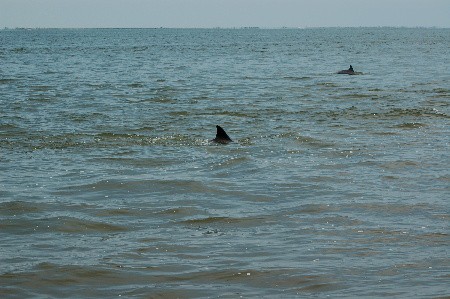Time for a Wetland Lesson
Many of you newer readers have no clue how this blog about Life in the Louisiana Wetlands came to be or why anyone would even care to write or read about such things. As you read the story of how I came from north Louisiana to south Louisiana and ended up staying, it is impossible to separate my story from the wetlands that drew me and held me.
As with most stories, we must go back in history to understand the full meaning of how we came to be the way we are today. Thirty years of wetland loss are explained simply in my book Before the Saltwater Came. This book and its companion Guidebook for Educators have opened hundreds of doors for me, where I have had the privilege of sharing with and educating people of all ages about our coastal land loss and the value of restoring and sustaining these wetlands–not only for us, but for all the marine life, wildlife, and plant life here.
The wetlands in which we live are the Mississippi River Delta, created over about 7,000 years of flooding of the mighty river. As the river overflowed her banks, she also filled to overflowing these low-lying distributaries we call “bayous”. During that time, the river carried large amounts of sediment with it, and as these bayous overflowed, the sediment was deposited along their banks, eventually forming high ridges of land. These high ridges are where the first Native Americans settled their villages–later joined by French immigrants and the Acadians. It is imperative that we understand that these nutrient-rich ridges were not flood prone in those days.
Fast forward to the big Mississippi flood of 1927 that inundated twenty-seven thousand square miles of delta, blowing out Army-Corp levees as it went. The short version is, this flood resulted in additional miles of massive levee building, and a series of locks and dams from the headwaters down to New Orleans. Bear in mind, though, that the river always followed the path of least resistance to the Gulf of Mexico, changing paths at least seven times. A river-control structure was put in place in Louisiana, to keep the river in its current lobe and to keep it from moving westward and joining one of its branches now called the Atchafalaya River, while diverting a controlled amount of the Mississippi into the Atchafalaya.
As the Mississippi River’s seasonal flooding was contained, so also was the life’s blood of this new delta–the sediment. With no more seasonal flooding, new layers of sediment were no longer being deposited along the bayou ridges. A natural sinking of the delta over time, called subsidence began and continued, unchecked.
With the discovery of natural gas and underground crude oil in the 1930’s came a new drilling industry, not only in Texas, but in coastal Louisiana, as well. The sucking of layers from under this delta has sped up the rate of subsidence, according to some experts. The long-reaching affects were never considered as drilling expanded southward to the marshy coastlines. Thus, inland drilling barges were developed; and the cutting of canals needed to accommodate these floating drilling rigs, added one more layer of negative impact to already-threatened wetlands.
Along with the inland drilling barges came increased boat traffic bringing needed equipment and supplies to these drilling barges, reachable only by water. So, at this point in our story, this rich, relatively-new land, the Delta, has at least five major events impacting it and contributing to what has become a loss of 25 square miles a year–a football field every half hour:
1) No more sediment from the Mississippi to rebuild the delta
2) Natural subsidence
3) Subsidence exacerbated by human impact of drilling in coastal wetlands
4) Cutting up of the valuable marshes by rig canals
5) Increased erosion from wave action of large boats
Today, the rich alluvial delta bordered on the east by the Mississippi River and on the west by the Atchafalaya is called the Barataria-Terrebonne National Estuary System. This includes the fourteen parishes that exist within these boundaries. In 1990, Coast 2050 was adopted, which brought federal and state agencies into agreement that this estuary system was losing land way too fast and needed to be restored and protected.
Later, Coast 2050 became known as Coastal Wetlands Planning Protection and Restoration Act (CWPPRA– pronounced kwip pruh). As of this writing, there are about 130 CWPPRA projects either in the study-engineering phase, ongoing, or completed. Ideally, all these projects would combine and overlap to restore the barrier islands and coastal Louisiana to its 1950’s topography. And yes, it is possible.
Not to confuse you further, but the coastal zone of Louisiana that borders the Gulf of Mexico was branded in 2004 as America’s WETLAND. As an American, do you feel like coastal Louisiana is your wetland? That, my friends, is not a rhetorical question; but rather a question each one of us should ask, and then answer.
In addition, I would like to keep this dialog going until all questions are expressed and answered satisfactorily. If this blog has done anything to increase your knowledge and understanding of why these wetlands are valuable not only to Louisiana, but to the nation, I would like to know that, too.
Lastly, I would like you to watch this short video explaining more about CWPPRA, our plight here in coastal Louisiana, and that restoration is possible.
So, I leave you now with the video and lots of thinking to do.
BW
[youtube=http://www.youtube.com/watch?v=kkwYSHJWyTE&w=480&h=390]





Excellent post! I hope you’ll keep us updated on the success of the Marsh Island refuge. You know I feel “America’s Wetlands” are important to America.
awesome post and the video was great- you are such a fantastic advocate for our beautiful coastal wetlands!! As you know- the marsh is my fav. place to be .
ps I posted this video to my FB page!!!!
Not to be the bearer of bad tidings but they are calling for record flooding this year snow pack is incredible up here and north. It slides down hill to Mississippi river.
Shhhhhhh, Blu.
Didn’t that happen once before not too long ago Blufloyd? We are having some flooding in our area because of the snow melt and more snow due Wednesday.
I am beginning to wonder if we were relocated to the north and just didn’t know it. This isn’t Texas weather at all.
Just move the yaks down to the home place to ward off the voodoo, child.
I am pretty funny on these drugs.
With all the sediment flowing down the Mighty Mississippi, maybe the next place to do this would be in the Plaquemines Parish area. It would be wonderful if there were about 20 of the “projects” going on simultaneously. OK, I’m greedy…something like this operation is long overdue! I’m not in “marshy” areas very often, but I’ve seen how things have changed considerably in the last 10-15 yrs. GOOD POST, BW! I hope more people post this video to there blogs. I will encourage everyone in my address book to watch it.
As far as sediment, farming practices up here have got the streams as clear as I have ever saw them. Hoping for sediment load in anything other than wipe out flood conditions is fooling yourself in modern times.